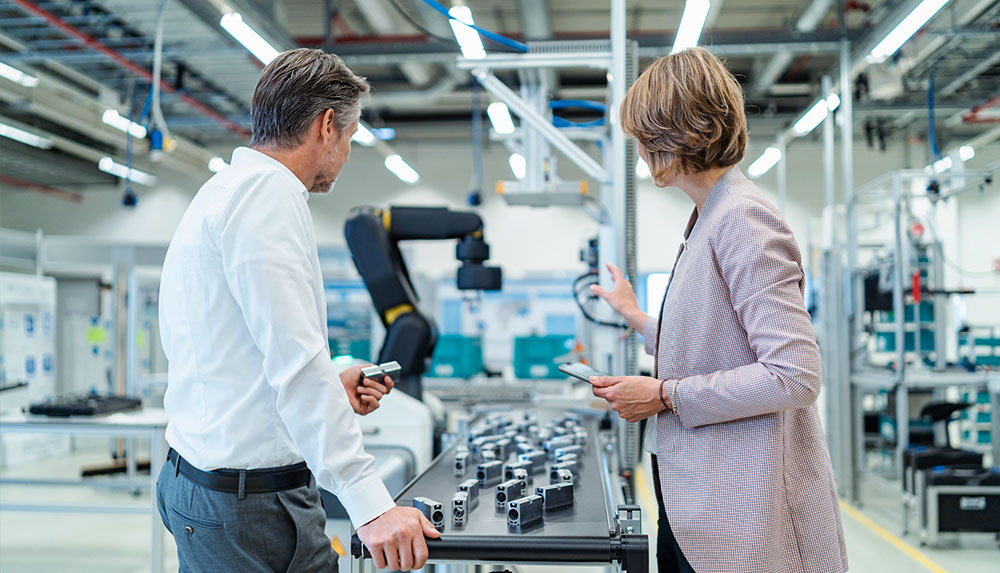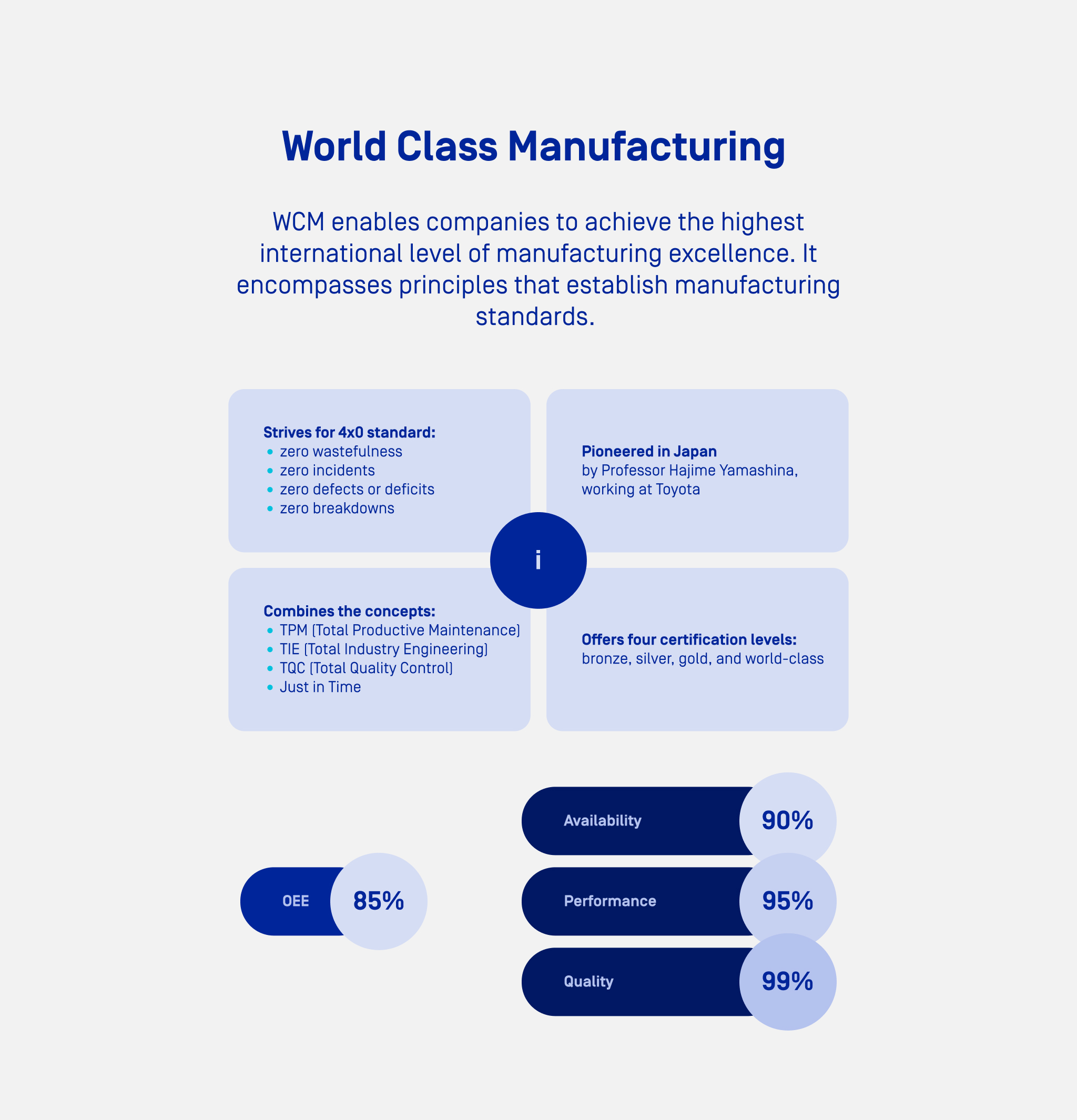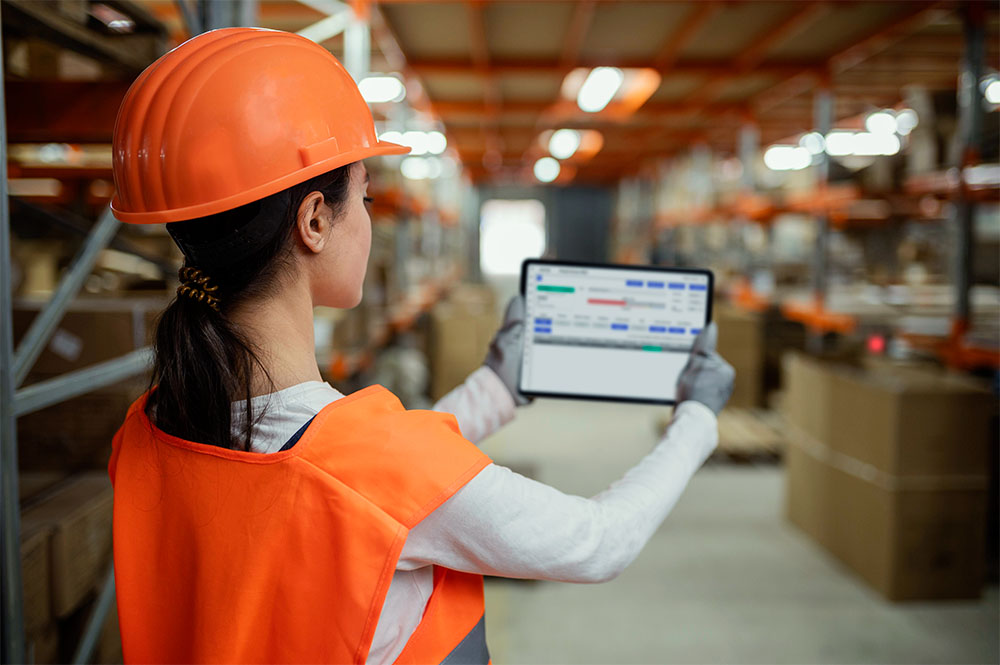
OEE in the Context of World Class Manufacturing

Michał Zieliński
The escalating costs of labor, power, utilities, and transportation don’t release managers from the obligation to deliver results, and their targets remain unchanged. How can one cope with this mounting pressure?
One way to address this challenge is by increasing efficiency, ensuring that, by utilizing the same resources – machines, tools, and workforce – we can manufacture more goods or services. Yet, before diving into this, let’s first determine what efficiency truly entails and how to measure it.
My recent article, available at ImFactory Knowledge Zone, delves into the topic of OEE, the KPI most widely used in performance analysis.
Link to the article: The OEE Indicator: How to Calculate Equipment Effectiveness Based on Availability, Performance and Quality
If you’re wondering what it means to have a high OEE, the answer may lie in the concept of World Class Manufacturing (WCM).
WCM represents an international standard, an optimization strategy, or a methodology focused on improving the operations of an enterprise. Implementing WCM is founded on two sets of pillars – managerial and technical.
Their implementation requires continuous efforts from all employees. Therefore, the engagement must not be sporadic. On the contrary, it should be deeply embedded in the organization’s culture. Each pillar is defined by seven implementation steps, and the degree of adaptation is assessed during both internal and external audits. These audits form the basis for certification at one of four levels: bronze, silver, gold, and the highest, world-class.


Michał Zieliński is a graduate in Automatic Control and Robotics, as well as a postgraduate Lean Six Sigma Black Belt from Gdansk University of Technology. He is a partner at ImFactory, where he works as a Project Manager and Head of the Digital Consulting Department. At ImFactory, he is involved in shaping a vision for the advancement of IT systems in manufacturing environments, evaluating the digital maturity of enterprises, and planning their Digital Transformation journey. His projects encompass a wide range of activities, from overseeing surveillance and monitoring installations to implementing comprehensive integrated manufacturing management systems.
See also
Want to learn more? Visit our Knowledge Base, where you'll find articles and webinars by experts to expand your knowledge.
Check if Digital Transformation is the Answer to Your Company's Needs
The Free Consultation Process:






























